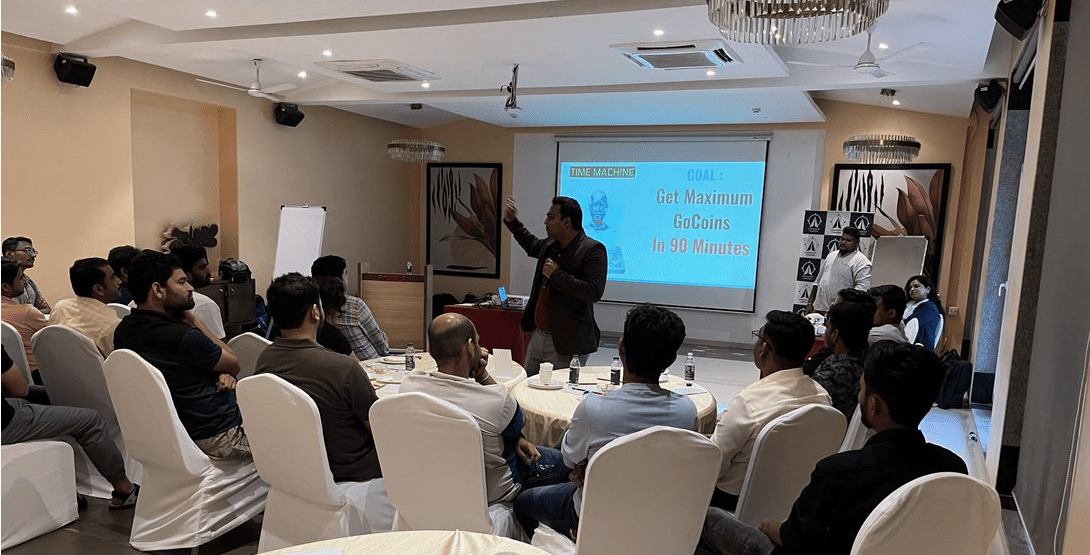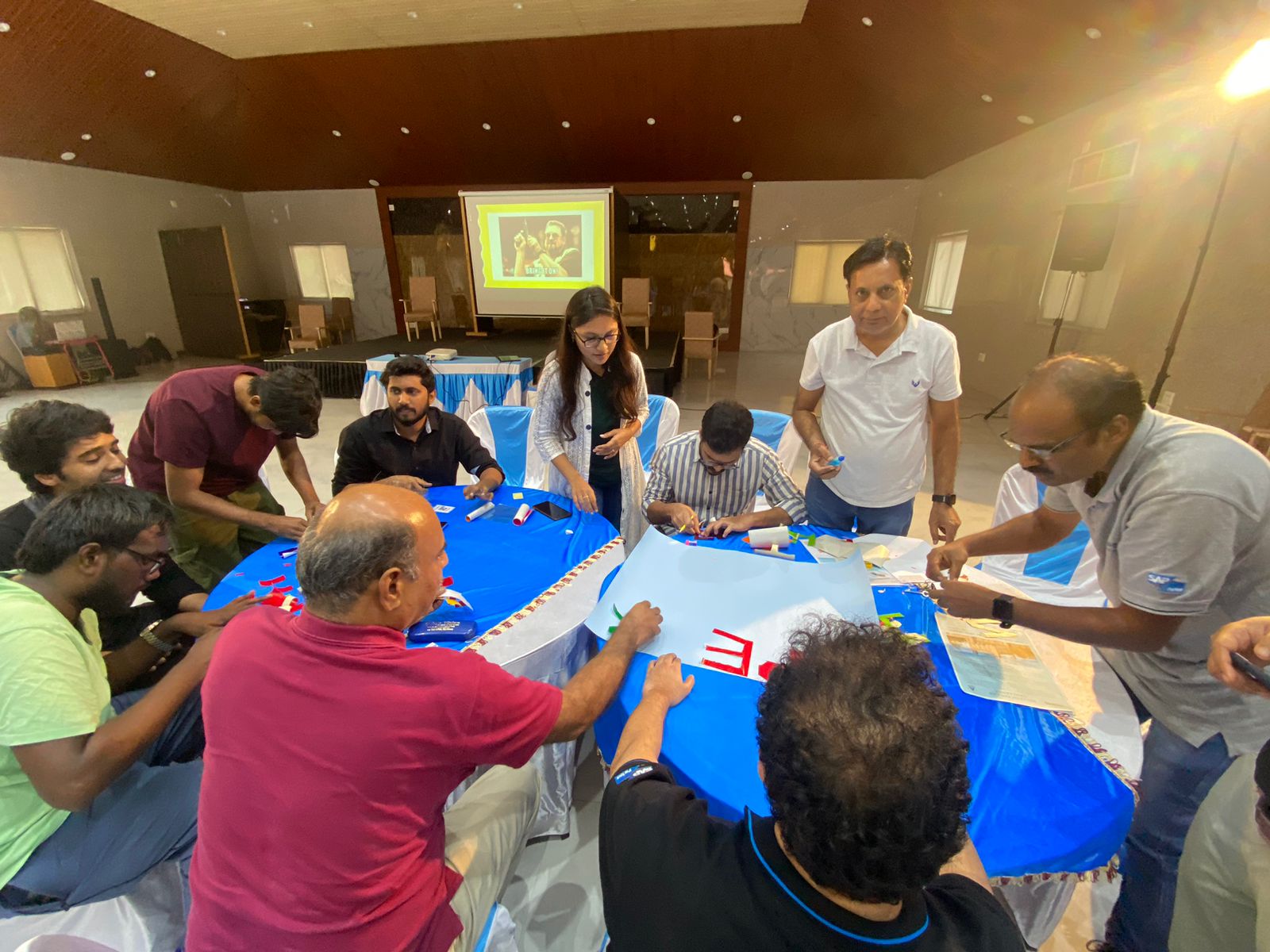
Today, businesses face a growing challenge: keeping top talent engaged and committed. While salary, benefits, and growth opportunities are all critical components of employee retention strategies, one often overlooked yet incredibly impactful factor is team building.
Team building goes far beyond games or one-off retreats; it’s a continuous investment in building trust, strengthening communication, and fostering a sense of belonging. When people feel genuinely connected to their colleagues and company culture, they’re far more likely to stay. That’s where corporate bonding, team development activities, and consistent engagement come into play.
In this blog, we’ll explore why team building is essential to employee retention, the psychology behind it, the types of team-building activities that actually make a difference, and actionable team-building activity ideas to incorporate into your retention strategy today.
Before diving into team building, it’s important to understand why employee retention strategies are vital. Losing a skilled employee doesn’t just mean hiring someone new; it involves recruitment costs, training time, lost productivity, and sometimes even customer dissatisfaction. According to studies, the total cost of losing an employee can be anywhere from 30% to 200% of their annual salary.
Now consider this: a disengaged, isolated, or unhappy employee is far more likely to leave. This is where team building becomes more than a “nice-to-have” office activity as it’s a business necessity.

Team building refers to a range of structured activities and strategies designed to improve relationships, collaboration, and trust among employees. When done right, it leads to:
Corporate bonding through team building is rooted in human psychology. When people feel connected, they feel safe. When they feel safe, they’re more likely to thrive. And when they thrive, they stay leading overall growth of the organisation and lower employee costs.
One of the top reasons employees leave a job is a lack of connection. They feel like a machine, unseen and undervalued. Team-building activities promote inclusion, helping every employee feel like an integral part of the team.
When employees feel accepted and connected, they’re significantly less likely to look for opportunities elsewhere.
It’s easy for teams to become disconnected, especially in remote or hybrid environments. Over time, this leads to miscommunication and conflict. Regular team development activities build interpersonal bridges and smooth out day-to-day collaboration.
Stronger working relationships mean fewer internal tensions and a more enjoyable workplace, making people want to stay.
Team building often involves play, creativity, and moments of fun, elements that naturally reduce stress and improve well-being. Employees in a positive environment are not only more productive, they’re also more resilient to workplace pressure.
A stress-reducing, supportive team culture is a massive win for long-term retention.
Trust is the bedrock of any high-functioning team. When employees trust one another (and their managers), they’re more likely to express ideas, ask questions, and admit mistakes. This openness leads to better innovation, fewer misunderstandings, and higher employee loyalty, and regular team-building activities help in accelerating this process.
Corporate bonding activities are a perfect way to reinforce your company’s mission and values. When team building aligns with the organization’s purpose, employees feel more connected to the bigger picture and more motivated to stay part of it.

It’s not enough to plan a pizza party and call it a day. The best team-building activities are purposeful, inclusive, and tailored to your team’s needs. Here are proven ideas for building trust, camaraderie, and commitment.
Try activities like escape rooms, hackathons, or team challenges where everyone must contribute to find a solution. These experiences simulate real-world collaboration, sharpen communication skills, and highlight each person’s value.
Giving back as a team is one of the most effective ways to build empathy and shared values. Organize charity fundraisers or mentoring programs. These moments of impact create lasting emotional bonds.
Use tools like StrengthsFinder, DiSC, or MBTI to help team members understand themselves and each other. When people understand different work styles, it reduces conflict and promotes cooperation.
Whether it’s a weekend in the mountains or a single day offsite, retreats offer the chance to step out of the routine and build deeper relationships. Combine work sessions with recreational activities for the perfect balance.
Never underestimate the power of everyday interactions. Host regular coffee chats, team lunches, themed dress-up days, or “Fun Fridays.” These low-cost team development activities keep morale high and foster informal connections.
Remote work doesn’t mean disconnected teams. Try virtual trivia, Bollywood bubble challenges, or show-and-tell sessions. Consistent virtual bonding is essential for distributed teams.
Integrating team building into your employee retention strategy isn’t guesswork—you can measure its effectiveness. Here’s how:
Compare turnover before and after implementing regular team-building programs. A drop in exits, especially among new hires, is a strong indicator of success.
Use quarterly pulse surveys to ask employees how connected and supported they feel. Look for improvements in questions around team relationships, trust, and communication.
After team activities, gather informal feedback through one-on-ones or small group discussions. Listen for comments like “I feel closer to my team now” or “I feel more motivated.”
High-functioning teams often perform better. Use KPIs like project delivery rates, internal collaboration scores, or client satisfaction to spot changes after team-building investments.

To be effective, team building can’t be a once-a-year retreat. It should be woven into the fabric of your employee retention strategy.
Plan monthly or quarterly activities, some casual, some strategic.
Tie team building to communication improvement, innovation, or stress reduction goals.
Choose activities that suit various personalities, physical abilities, and preferences. What energizes extroverts might exhaust introverts.
When leadership participates, it signals that team development is a priority. It encourages participation and shows alignment with company values.
Not all activities will hit the mark. Ask your team what they’d enjoy. Refine your approach regularly.
At Corporate Compass, we are more than just an organizer. We are your strategic partners in fostering corporate bonding and long-term employee retention. With years of experience working across industries and team sizes, Corporate Compass understands that every team is unique, and so are the dynamics that drive engagement.
Here’s how we can help:
Whether you’re a remote tech startup or a hybrid enterprise, Corporate Compass offers tailored team development activities to match your format and objectives. From high-energy outdoor adventures to reflective leadership workshops, they provide a diverse menu of experiences to suit every team.
Unlike generic activity planners, Corporate Compass designs programs with a clear focus on employee engagement and retention. Their events are structured to enhance communication, reduce isolation, and reinforce shared values, key factors that keep employees loyal and fulfilled.
Forget the stress of coordination. Corporate Compass handles everything. Our team ensures a smooth, impactful experience so your HR and leadership teams can focus on participation and relationship-building.
Corporate Compass goes beyond fun. They track key feedback and performance metrics tied to each program so you can measure improvements in team morale, cohesion, and engagement over time, making your employee retention strategies more data-driven and effective.
In the end, a strong employee retention strategy doesn’t hinge on perks alone; it thrives on connection. When employees feel understood, valued, and part of a cohesive unit, they’re far more likely to stay, grow, and contribute over the long haul.
Team building is your bridge to that outcome. Through thoughtful, regular, and inclusive team-building activities, you create an environment where people don’t just work together, they want to stay together.
So if you’re looking to reduce turnover, enhance your culture, and keep your best people around, it’s time to treat corporate bonding and team development activities not as optional extras, but as strategic essentials.